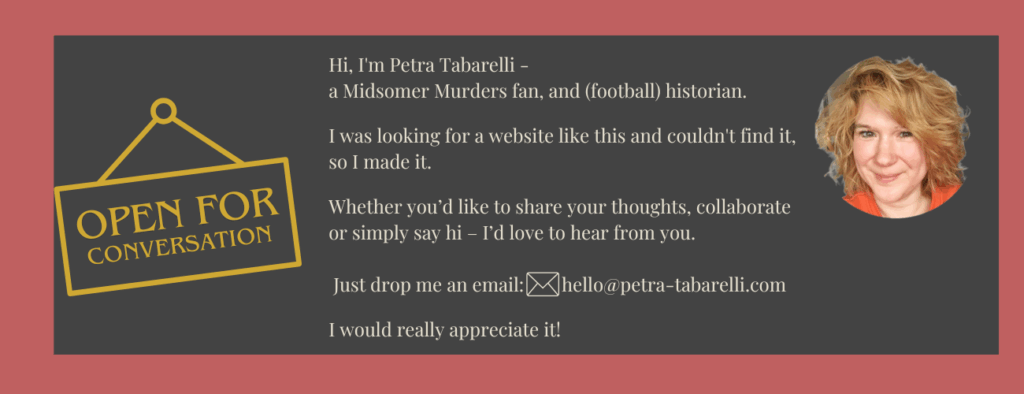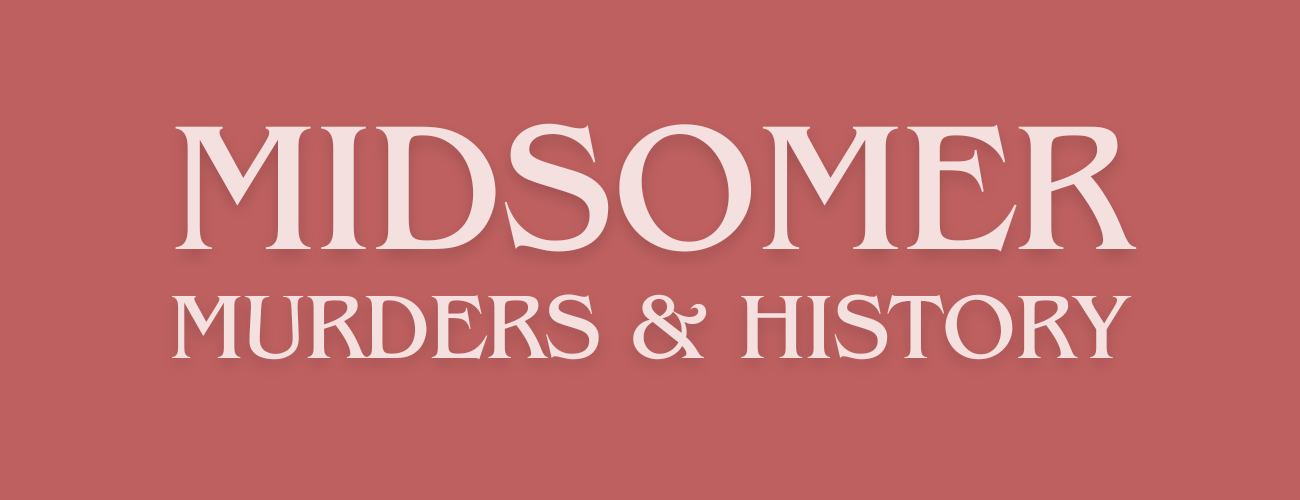Loseley Park was used as the film location for: Magna Manor in Midsomer Magna (‘They Seek Him Here’), Morchard Manor in Midsomer Morchard (‘The Noble Art’)
Film location for Midsomer Murders
Loseley House, a historic manor in Artington, Surrey, is located about 3 miles south-west of Guildford. The imposing Tudor building, part of the National Heritage List since 18 February 1958, is a rare example of Elizabethan architecture that has been preserved in its original form to this day.
The manor has so far been used as a filming location for two episodes of our beloved series, namely
- Magna Manor (S10E07: They Seek Him Here)
- Morchard Manor (S13E06: The Noble Art)
Let’s take a look at the history of this manor, which is closely connected to the recently introduced Waverley Abbey. Why? Well this Tudor building was built partly from stones from the then recently dissolved Waverley Abbey.
The History

The history of Loseley Park goes way back to a time when the land on which the present estate stands was known by a different name. In the famous Domesday Book, the first detailed land survey of England from 1086, it is listed as ‘Losele’. At that time it belonged to a certain Turald, who received it as a fief from Roger de Montgomery, one of William the Conqueror’s closest companions. There was already a farmstead here in those early centuries, but the history of Loseley Park as we know it today only begins some 500 years later, when Sir William More decided to build a new estate.
Sir William More, a descendant of the famous statesman and humanist Sir Thomas More, had the present estate built between 1562 and 1568. But even these stone walls tell a story of beginnings and endings: For old masonry from an even older site was used to build Loseley Park – those venerable stone ashlars of Waverley Abbey. This abbey, the first Cistercian foundation on English soil, was dissolved in 1536 in the course of the Reformation (Dissolution of the Monasteries). The stones of the ruins were removed and found a new home here in Loseley Park, where they have carried the splendour and power of that time ever since.
Queens & King
The building itself was characterised by a reverence accorded to few. Queen Elizabeth I had announced her visit, and the modest building that had stood in the country until then was simply considered inadequate for the reception of a queen. So the stately manor was built, which was henceforth available to the noble guests of the More family and was specially designed to accommodate monarchs.
The carved woodwork above the fireplace in the library, dated 1570, is still a reminder of one of those royal visits. The two bedchambers, the King’s Room and the Queen’s Room, also tell of a time when King James I and Queen Elizabeth I stayed here. The family‘s connection to the Tudor dynasty is emphasised by another valuable piece of evidence: One of the few surviving portraits of Anne Boleyn, the mother of Elizabeth I, has found its place here. The thought that not just one, but the crown came and went in these halls gives the building an almost tangible aura of royal grandeur and transience.
The Loseley House

But the story does not end here. Loseley Park is still in the hands of the family that was once entrusted with its construction: the More-Molyneux family are direct descendants of Sir William More and are the third generation to live on the estate.
The property is open to the public at certain times and impressively demonstrates the structure and layout of a typical manor from this era. Particularly noteworthy is the Great Hall, which was also used as a location for the film They Seek Him Here. Externally, the appearance of the building has hardly changed since it was built, with only the design of the main driveway suggesting a later remodelling inspired by Queen Anne.
The adjoining 17th century tithe barn can now be hired for private events such as weddings.
Loseley House has not only been used as a film location for Midsomer Murders, but for several more – since the 1950s. Perhaps the most famous uses are the film adaptations of Jane Austen’s works ‘Sense and Sensibility’ and ‘Emma’ in the 2000s.
The Gardens of Loseley Park
The walled gardens of Loseley Park – an estate with a history dating back to the 16th century – shine with a harmonious interplay of form, colour and historic spirit. Based on a design by Gertrude Jekyll in 1905, the gardens show her unmistakable signature: a graceful interplay of rose beds, herbaceous borders and carefully placed shrubs that exude a quiet elegance and at the same time an ordered opulence.
The bed to the north in particular, along the wall of the vegetable garden, reflects the typical Jekyll design, while a herbaceous border stretches along the moat, framing the gentle arches of the paths with its abundant blooms. A look back at paintings and photographs from the 1880s to 1900 shows Loseley in the style of Miss Jekyll, whose mixed borders and formal paths created a harmonious dialogue between architecture and nature even then. Even the magazine Country Life in 1899 praised the unusual planting of bamboo bushes and hemp palms that lined the property – trees and shrubs that still give the garden its exotic charm today.
The planting along the terrace wall, down the steps to the herb border, to the yuccas and old fruit trees by the moat, still bears the soul of Jekyll’s artistic garden philosophy. Its characteristic climbing roses, lavender and daisies, which welcome the observer with their unagitated beauty, are silent witnesses to a garden that preserves history and yet always comes to life anew.
Open to the public
The careful further development of the grounds in 1993 and 1994 brought the garden to its current bloom: an award-winning rose garden with over 1,000 bushes, the extensive herb garden whose fragrance fills the air, a lush flower garden, wisteria, and a garden for cut and organic vegetables that specialises in rare, historical varieties. The ‘White Garden’, with its rippling fountain and silver-grey foliage, may be the shining centrepiece of the grounds.
It is this diversity that today elevates Loseley Park to a garden of national significance – a living legacy that seems to transcend the boundaries between historic preservation and contemporary evolution, proving itself timeless in the spirit of Miss Jekyll.
Loseley Park was open from May to August 2024 on Sundays and Thursdays – 10.30 a.m. to 4 p.m. The house was open until the end of July, the gardens until the end of August.
Read more about Midsomer Murders & History
The Chronology of Midsomer County by Year or by Episodes
Deep Dives into Midsomer & History
This is an independent, non-commercial project. I am not connected to Bentley Productions, ITV or the actors.

First published on MidsomerMurdersHistory.org on 10 October 2024.
Updated on 2 November 2025.


13 thoughts on “Visit Loseley Park – Midsomer’s Magna Manor & Morchard Manor”